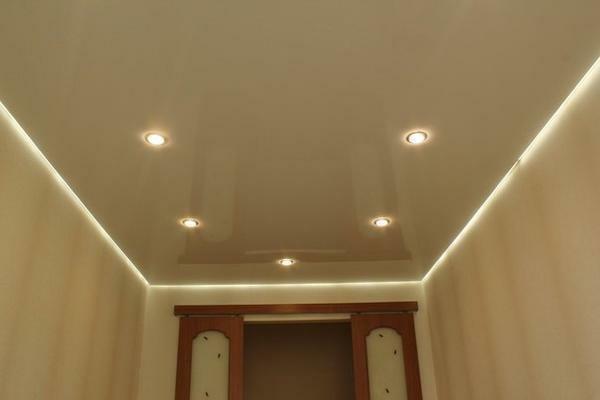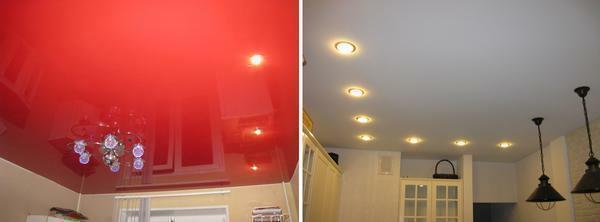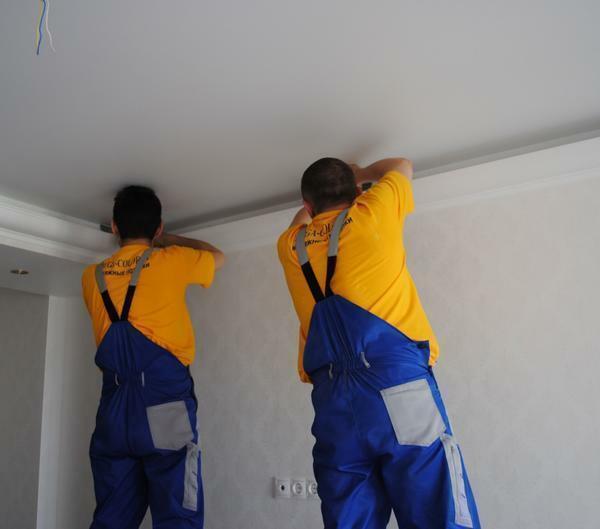If there is no second floor, and above - not a heated attic, then the foam layer will be relevant. It is advisable to attach it from the outside, but if this is not possible - it is done from the inside( for example, if it is an apartment in a multi-storey building, which is on the highest floor, and the roof immediately comes from the top).
First of all, the ceiling is cleaned from the finish to the capital level( concrete slab, brick, wooden beam).Further processing with pesticides. To do this, special solutions are used, which refuel a conventional sprayer and is applied to the substrate under high pressure. One should not forget about the elementary rules of protection from chemical reagents, since pesticides have an average class of toxicity.
After treatment, it is recommended to stop the repair for 2-3 days, while periodically ventilating the room. This should be done even if the pesticide manufacturer claims that it is in no way toxic to the human body.
After all this, you can begin to insulate the ceiling with your own hands. The first thing is to install a waterproofing film. It can be as a usual polyethylene, and combined multilayer moisture protection. Of course, the second option is preferable. Such panels are attached to the dowel, and it is better to use self-locking fleas, which do not have hats as such and are screwed to the end of their level. They do not remain protruding parts, which in the future will not damage the foam.
On top of the waterproofing you can attach the foam itself. Its permissible thickness is in the range of 5 to 15 centimeters. More for living quarters, and even insulation from the inside, it is not necessary. It is also fixed on dowels or on polyurethane glue. Experts recommend a combination of these methods. That is, first strengthen on the glue, and already on top of all this reinforce the dowels.
The reinforcing mesh is then pushed into the foam. For this purpose, a basalt canvas is best suited. It can be mounted on the whole plane using an ordinary construction stapler. The main thing is not to spare the staples.
Now it remains to apply a primer all over the area of the insulated ceiling.
There are several options for it:
- ground coat;
- layer of plaster( in 1-2 centimeters);
- rough gypsum board( fastening with glue);
- special protective emulsion for the ceiling.
Preferred option - primed plaster. It lasts the longest, and it is inexpensive, and will last for decades. Plus to this - it acts as an additional reinforcement, which provides mechanical protection of the ceiling.
From above, you can finish with any material. It is allowed to use gypsum board, stretch ceilings made of PVC film( with glossy coating), simple whitewashing, foam plates and so on. You can even apply a facing siding, if it looks attractive in the design plan.
Thermal insulation of the ceiling with foam: reviews of those who have already performed
Studying reviews on thematic forums, it can be said that the effect of thermal insulation of the ceiling with polystyrene is generally positive. Of course, it is recommended to insulate both the walls and even the floor, but then necessarily have to mount an additional ventilation system( forced type, that is, with an installed cooler and exchanger, which will also heat incoming air inside).
The only point that was not taken into account by all was the need to use a facade foam that has a higher density( most often it is made in gray, and the labeling has the designation "F", but not all manufacturers comply with these rules).
The tests showed that the installation of foam on the ceiling:
- increases the insulation of the room by 15 percent;
- reduces the amount of noise 3 times;
- visually aligns the surface, regardless of the bevels.
If the foam is mounted also on the walls, the floor, and the window openings are closed with modern PVC profiles with energy-saving double-glazed windows, the insulation of the room will be improved by 60-80 percent.
And what is still better - polystyrene or basalt fiber( sold in rolls and also considered good thermal insulation)?According to technical characteristics - glass wool, but the cost and efficiency( given the money spent), the favorite is beyond doubt a foam plastic. In addition, it is much easier to manage it, to mount it. And if even one of the plates needs to be replaced - it's easy to do. But the glass wool layer will have to be changed completely.


